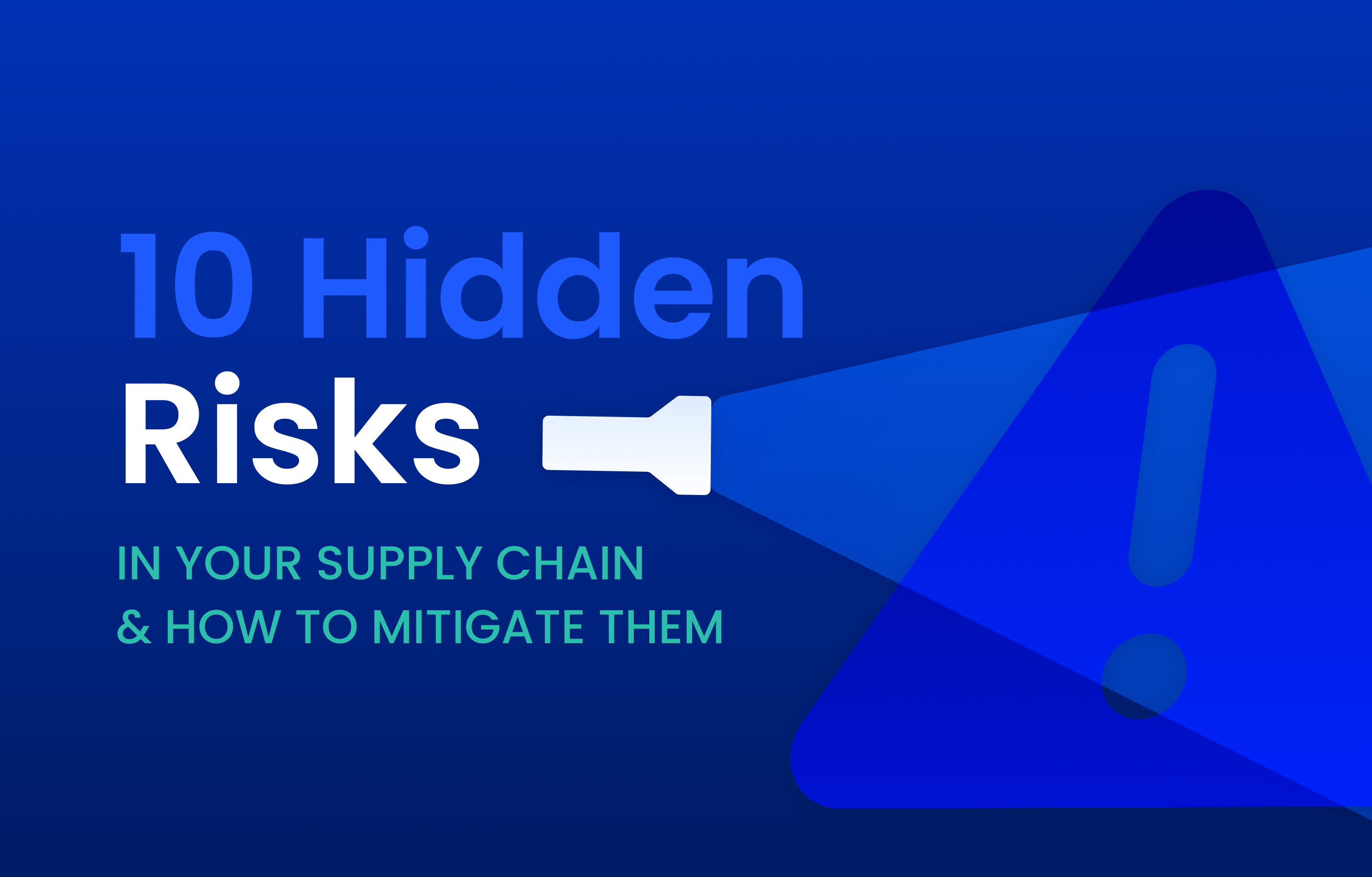Today, risk management is becoming a vital component to supply chains worldwide. Risks are defined as a situation involving exposure to danger—in global supply chains, there are many risks that could occur. All risks can have damaging effects to a business, greatly impacting millions, sometimes hundreds of millions, in sales or liabilities.
Risks can be either internal or external. Internal risks are ones under you can control or influence. Examples include cost estimates, staff assignments, schedule delays, and product design. External risks are ones out of your control. Examples of external risks include governmental or regulatory actions or a change in currency rates that could affect the value of an international trade.
The main risks facing supply chains normally fall in the following categories:
Financial
Financial risks can include several things. External factors like an unfavorable change in exchange rates can have a deep impact on trade and funding across country lines. Another often overlooked financial risk is the cost of supplier instability or contractor bankruptcy. Internal factors such as budget overruns, finding the limitation, constructive changes, and missed milestones requiring additional funding can most times be prevented.
Scheduling
There are many risks that threaten a project timeline. Poor project management and poor wording or changes of scope of work are primary risks that threaten the timeline and can also have serious cost implications. Other factors like natural disasters—hurricanes, fires, floods—could greatly impact the project timeline as well.
Legal
Legal and contractual risks are often due to disputes or differences in contractual obligations or what is written in the terms and conditions. Other incidents such as use or misuse of intellectual property can also be considered as a legal risk, especially when patent infringement is a possibility.
Environmental
Sustainability is a huge priority for businesses. It’s critical to evaluate the risk to the environment created by your business practices or by third-party suppliers. Environmental risks include the organization’s negative impact on water, air, and soil because of improper discharge or release of emissions and other forms of waste.
Sociopolitical
The regulatory landscape can change in an instant—most times due to a new government or to increasing awareness of inequitable social conditions. Many companies experience difficulty in adapting to these changes and are forced to reevaluate sourcing efforts.
Human Behavior
Employee behavior risks are the most difficult to assess. Risks can occur when you don’t have the right people with the right knowledge to do the job. Sometimes the project or activity may be put in danger due to an illness or injury of key personnel.
Risks can differ from industry to industry, but here are our top risks to look out for in 2022:
- COVID-19—the pandemic has disrupted supply chains on a global level, forcing production to halt or companies to adjust to unprecedented circumstances. It will take months or maybe years for supply chain to recuperative from losses.
- Natural Disasters—climate change is proving to have a major impact to supply chains. From hurricanes to wildfires, employees and manufacturing can be put at risk of injury or damage.
- Reputational Damage—reputational damage will continue to be as important than it has been in the past, and customers will increasingly expect transparency as to how and where their products are made. Modern slavery and child labor will continue to be issues, and more and more companies will be forced to be held accountable.
- Regulatory—trade laws and exchange rates are not set in stone. And as countries continue to discuss their trade agreements with one another, there’s a possibility for significant changes.
- Digital—the digital age is advancing, and the pandemic helped. As more businesses go virtual and processes become computerized there’s always a risk of cyber security breaches, hackings, and other risks associated with computerization.
Understanding supply risk management can encourage companies to take effective action in response to these risks and should be an integral part of any business plan.


.svg)
.svg)
.svg)

.svg)

.svg)




